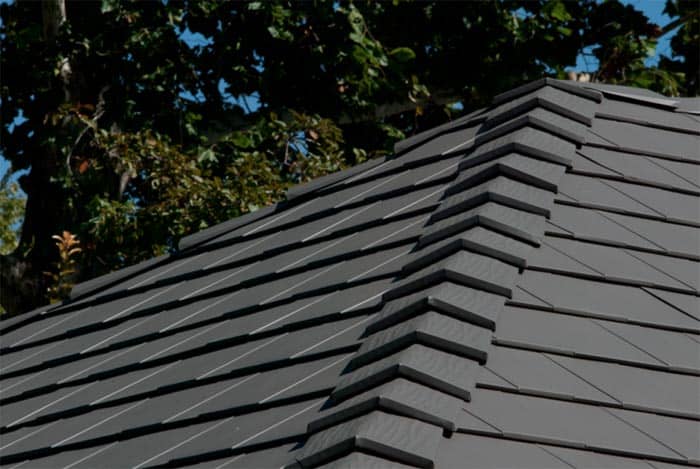Many homeowners email me and ask about exposed fastener metal roofing. Also referred to as “screw-through” or “channel drain” metal roofing, these products are roll-formed and have profiles that are oriented vertically on the roof. Commonly called “R Panel,” PBR Panel,” and “5V Crimp,” these profiles are corrugated wave or rib patterns formed into the panel. All of these products are fastened to the roof deck with screws that penetrate the face of the panel, leaving the screw heads exposed.

Many people—contractors and homeowners alike—refer to these products as “standing seam” roofing, when in fact, they are not true standing seam metal roofing systems. A true, high quality standing seam system will not have exposed fasteners and the individual panels will join together by some variation of an interlocking seam. Exposed fastener panels only overlap from one panel to the next. Also, true standing seam is manufactured in custom continuous length panels to avoid horizontal seams along the roof. Exposed fastener panels are often in standard lengths, resulting in horizontal overlaps as panels are stacked vertically up the roof.
Exposed fastener systems have been very popular in the agricultural market, used on barn roofs, chicken coops, and outbuildings. Many of these products do not require solid roof decking and can instead be installed over battens or strapping. These products are readily available around the country and, with the rapid growth of residential metal roofing, have been installed on many homes. The installation is quick and easy in most cases.
When homeowners ask me about exposed fastener products, I feel obligated to tell them that they may not be buying what they think they’re buying with these systems. Most homeowners invest in a metal roof expecting to enjoy all of its benefits—energy efficiency, maintenance free, increased home value, and long life expectancy. In most cases, though, exposed fastener metal roofing does not provide these same benefits.
Exposed fastener products were designed with the price conscious farmer, looking for a cheap and practical roof for his barn, in mind. For this reason, they are often made from lower grade raw materials than those that are used in metal roof systems designed for residential use. They are often G60 galvanized rather than G90, AZ45 instead of AZ55, and polyester paint as opposed to Kynar 500 or Hylar 5000. All of these compromises in the quality of materials make these products 20-25 year solutions while most homeowners expect a new metal roof to last 50+ years.
And then there are all of the fastener holes. An exposed fastener system on an average sized roof will result in hundreds, if not thousands, of screws drilled through the face of the panels. These screws have rubber washers or grommets initially but those soon dry out and crack. Additionally, the screws do not allow for the metal’s expansion and contraction and the fastener holes slowly “wallow out” over time. Water eventually penetrates these growing holes and significantly compromises the integrity of the roofing system. In order to prevent water from penetrating, the screws will need to be replaced every so often with screws of a larger diameter.
When homeowners ask me about these products, I tell them that they must be aware of these shortcomings and decide if it is the right investment based upon their own goals and circumstances. These products have significant shortcomings that can detract from the value of their home and not last much longer than traditional asphalt shingles. They are the perfect solution for barns, but exposed fastener metal roofing is oftentimes not what a homeowner is truly looking for.
As always, please feel free to email me to answer any questions you might have about roofing or ventilation.
Todd Miller
Tags
Subscribe to American Metal Roofs's Blog


Comments
Terrific post! Exposed fastener metal roofing may not be the best choice, even though it's easy to install. Thanks for sharing, very useful information.